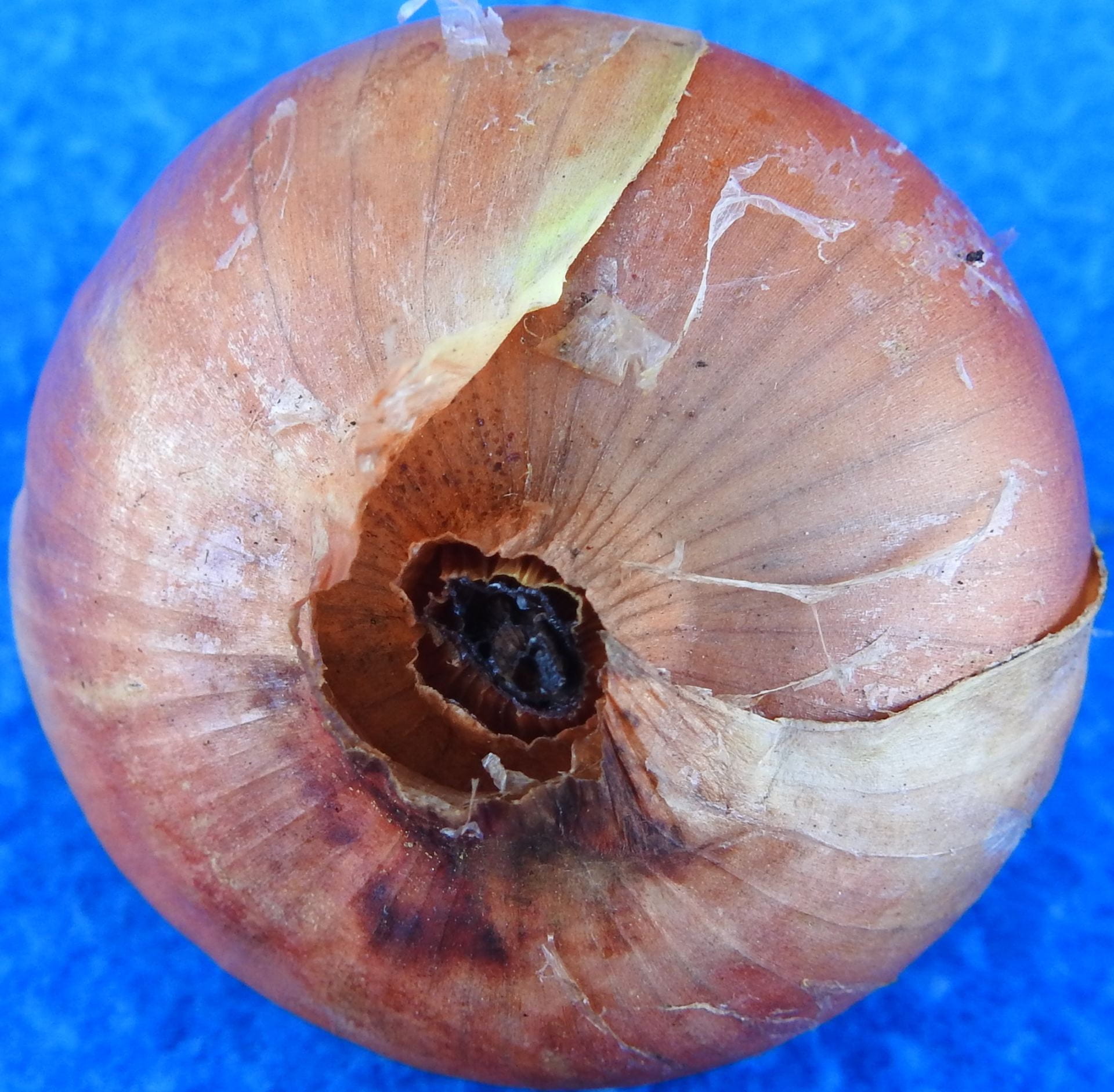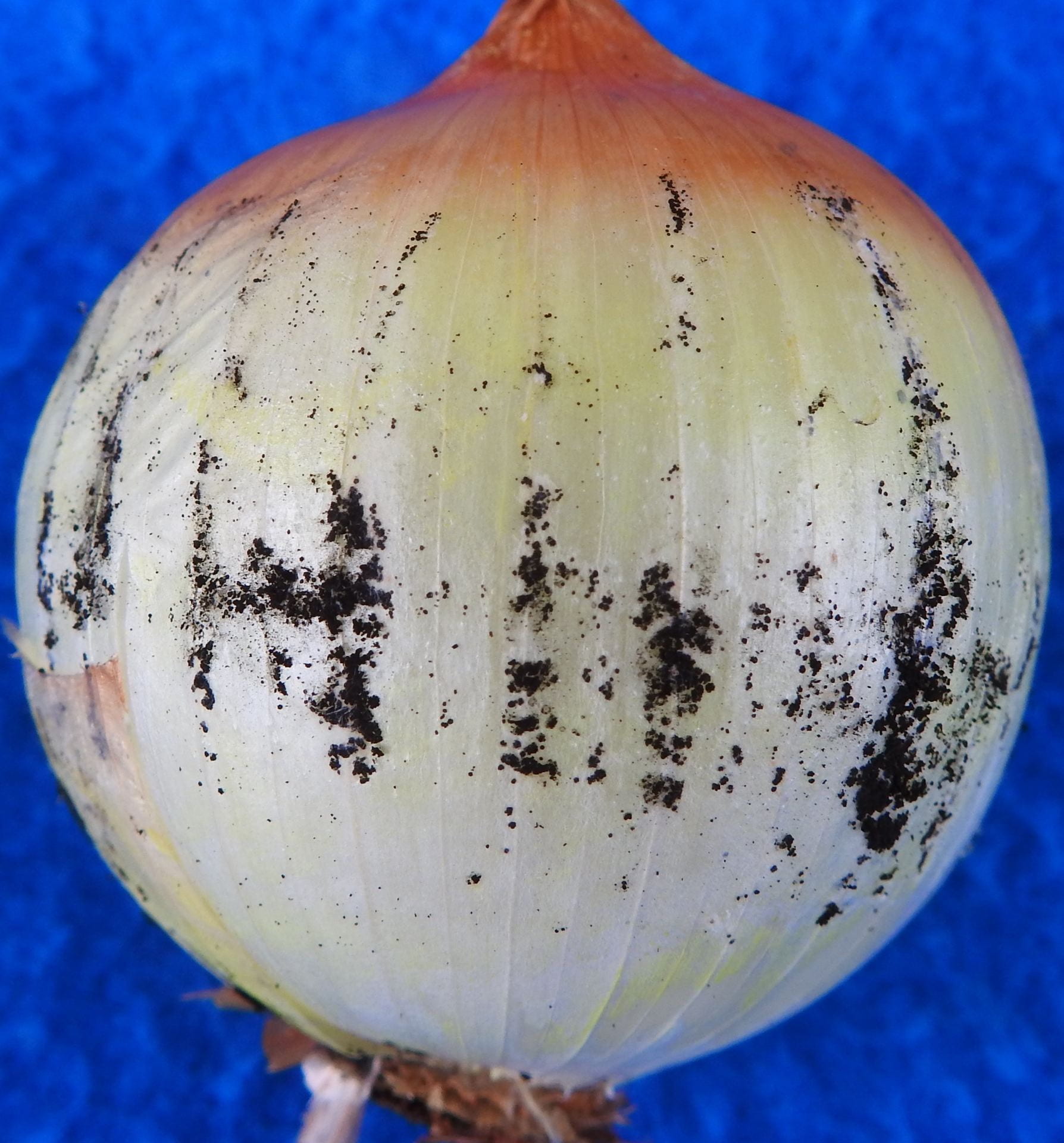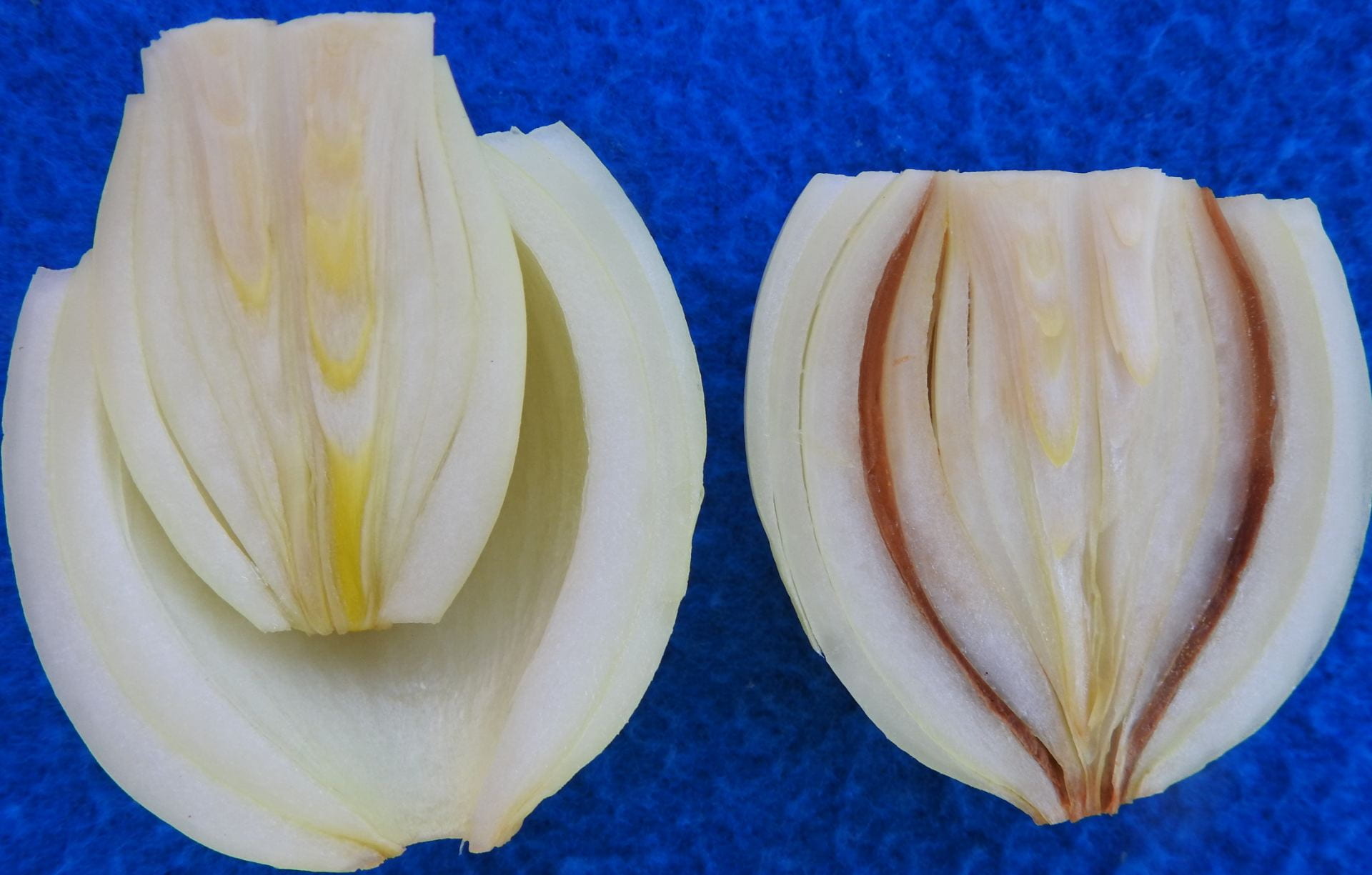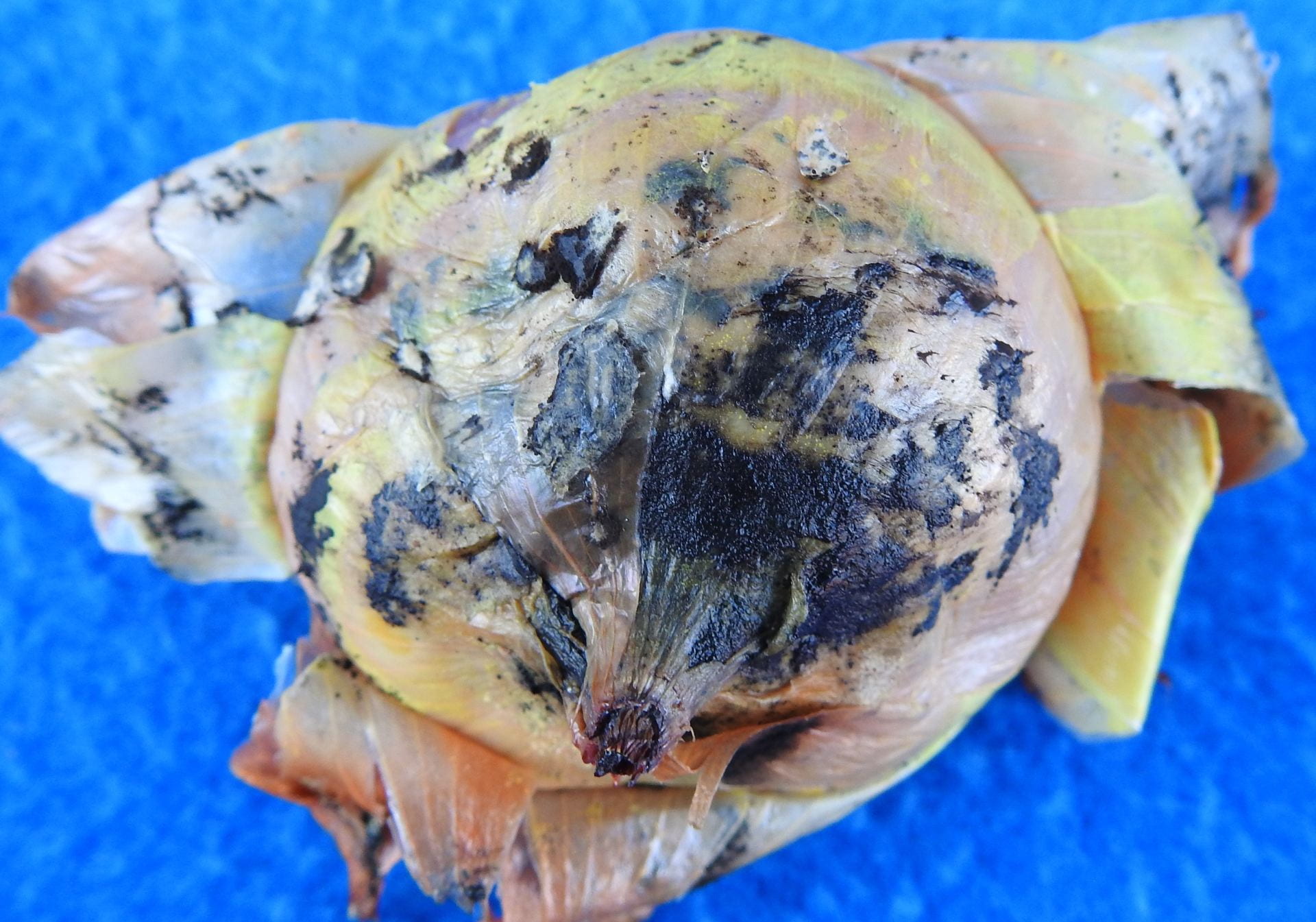The pathogen causing this disease, Aspergillus niger, is a fungus that commonly lives in soil surviving saprophytically on dead plant tissue. It can also be seed-borne. Its spores are common in soil and air. Infection occurs through wounds on roots, bulb tissue, and more commonly neck tissue when tops fall over as the onion matures. The black on affected onions in the images below are mycelium and spores, which are typically produced along veins creating vertical streaks on the bulbs. It is produced beneath the outer dry scales. Sometimes the black pathogen growth is visible without removing outer scales or in the neck tissue. As black mold progresses, the entire bulb surface becomes black and the onion shrivels as the fleshy scales become affected. This can occur during storage.
Manage black mold by minimizing injury before and after harvest. Store onions at 34 to 59 F and low humidity.
Bacteria causing soft rot of fleshy scales are able to invade onion bulbs following infection by the black mold pathogen. To show only one scale was affected, it was removed from the onion half on the left side of the first image below. The second image is an onion completely rotten due to soft rot and black mold.







